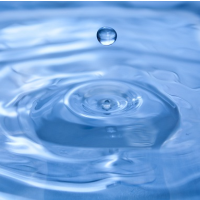Residential Water Reductions Are Half What the Governor Asked For and Stalling

California’s fourth year of drought has begun, with conservation goals in place and new measurements of water usage—to gauge fair participation in the effort—being rolled out.
The Emergency Conservation Regulation Update (pdf), released Tuesday by the state Office of Research, Planning and Performance, has produced numbers for the first time on residential water use because, “every gallon saved today postpones the need for more drastic, difficult, and expensive action should the drought continue into next year or beyond.”
The news is not good. After three months of improvement in conservation over the past year, September’s gallons-per-capita use among residential customers served by 400 urban water agencies was 10.3% lower than the previous September, but August over August improvement had been 11.6%.
Governor Jerry Brown had asked for 20% declines in his January Emergency Drought Proclamation.
The data, while useful in evaluating residential use, does not include the vast majority of water used in the state. Agriculture takes around 80% of the state’s resources, and industrial and business use around 6%, leaving residential 14%. The agriculture number is an estimate that swings 10 points in either direction and is not monitored like residential use.
The residential water agencies have not maxed out all the measures they can take to lower usage, but 87% have already implemented mandatory restrictions, the new report said. The State Water Resources Control Board, which gathered the data, identified the San Francisco Bay Area as having the lowest per capita usage (85 gallons per day) among the 10 regions. It also showed the third-best improvement (15.4%) over the year before.
The North Coast had the second lowest usage, 90 gallons, followed by the Central Coast (95) and the South Coast (119). It rockets up from there to South Lahontan (165), San Joaquin River (167), Sacramento River (177), Tulare Lake (184), North Lahontan (218) and the insatiable folks in the Colorado River area (252). The state median is 131.
The regions with the worst per capita numbers showed the least improvement. North Lahontan actually took a step back (0.1%) and Colorado River area was up 6.7%. Sacramento River area improved the most (16.6%), followed by Central Coast (15.9%), the aforementioned Bay Area and the San Joaquin River area (10.8%).
The per capita numbers can be a tad misleading. The Bay Area is helped by dense development that dictates small lots and not much lawn to water. The City of San Francisco had the second best per capita level (45.7 gallons), finishing behind San Cruz, already experiencing a Stage 3 Water Shortage Emergency.
Other notables included: the Los Angeles Department of Water and Power (92.8), Santa Barbara (78.9), City of San Jose (79.2), City of San Diego (81.8), Santa Monica (101.0), City of Sacramento (129.3), Pasadena (136.0), City of Brentwood (162.4) and the City of Beverly Hills (285.6).
–Ken Broder
To Learn More:
California Water Use Data Shows Big Cities Use Less (by Fenit Nirappil, Associated Press)
S.F. Residents Praised for Using Least Water in State (by Kurtis Alexander, San Francisco Chronicle)
Drought by the Numbers: Where Does California Water Go? (by D. J. Waldie, KCET)
How Does Personal Water Conservation Help When BigAg Is Using Most of It? (by Ken Broder, AllGov California)
Per Capita Daily Water Use Numbers Released by the State Water Board (pdf)
Emergency Conservation Regulation Update (by Max Gomberg, Rafael Maestu, Mark Emmerson, Carlos Mejia and Eric Oppenheimer, Office of Research, Planning, and Performance) (pdf)
- Top Stories
- Controversies
- Where is the Money Going?
- California and the Nation
- Appointments and Resignations
- Unusual News
- Latest News
- California Forbids U.S. Immigration Agents from Pretending to be Police
- California Lawmakers Urged to Strip “Self-Dealing” Tax Board of Its Duties
- Big Oil’s Grip on California
- Santa Cruz Police See Homeland Security Betrayal in Use of Gang Roundup as Cover for Immigration Raid
- Oil Companies Face Deadline to Stop Polluting California Groundwater





